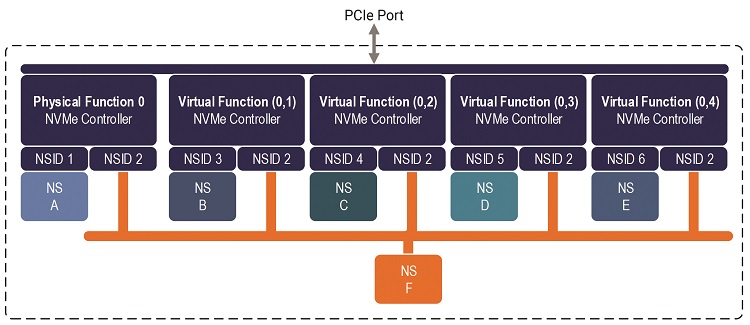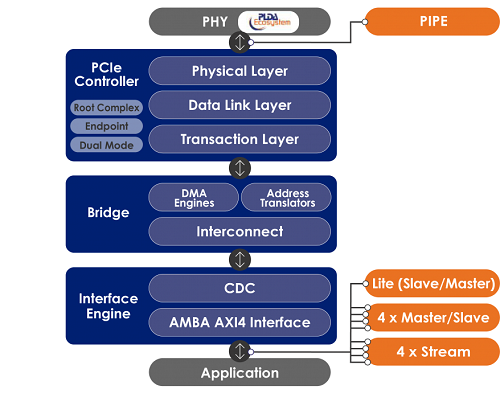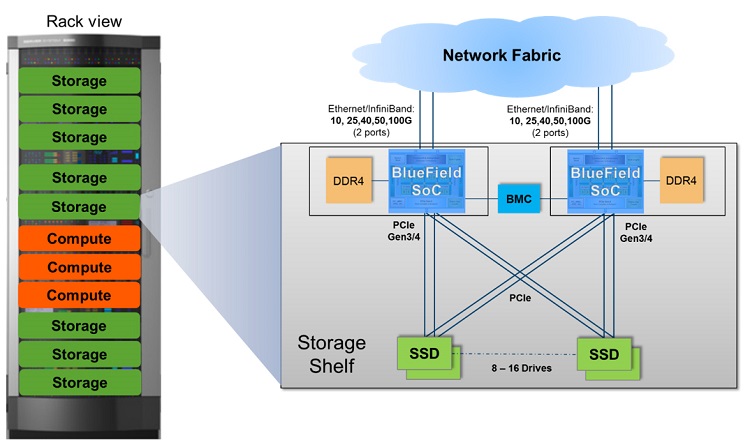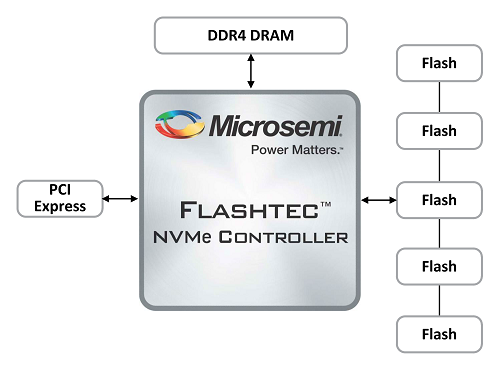BY MAJEED AHMAD
Contributing Editor
The NVM Express (NVMe), a communication interface for solid-state drives (SSDs), is breaking the shackles of legacy hard-drive storage technology built for spinning media. And the second generation of NVMe SSDs is here now, pushing the storage capacities past 10 terabytes.
The quest for cost- and power-efficient SSDs with higher capacity embodies the transition to NVMe-based flash storage solutions. Take NVMe devices for data centers, which are moving storage outside the server to centralized locations so that storage can be shared across multiple servers and CPUs.
The early adopters of NVMe include data analytics, artificial intelligence, and machine-learning applications. What NVMe storage technology does here is turn data into useful information after sifting through and analysis while creating datasets of unprecedented sizes.
Below are the four key trends that show where NVMe storage technology is headed in the coming days and what matters the most in designing NVMe-based storage devices.
1. NVMe 1.3 specification
The next version of the de facto standard for SSD interfaces has got a major update for the client, enterprise, and cloud features. The NVMe 1.3 version adds 10 new features, and below are the three most prominent highlights of this addition that came after nearly two-and-a-half years.
First is the enhanced support for virtualization that allows designers to flexibly assign SSD resources to specific virtual machines. Now developers don’t need to emulate an NVMe SSD to the OS, and that significantly boosts latency. It’s a critical advantage for cloud and multi-tenancy environments.
Then there is the Streams feature that tags data from different tenants in cloud hosting environments by allowing the flash controller to store related data at associated locations. In other words, it optimizes performance by mixing different workloads on a single SSD.

Fig. 1: Here is how virtualization works in the NVMe 1.3 specification.
The NVMe 1.3 specification also adds the Sanitize feature, which provides a native way to completely erase data, thus allowing more efficient reuse and decommissioning of SSDs. Other notable features include enhanced debugging tools and support for bootstrapping in low-resource environments.
2. The PCIe alignment
The industry continues to transition rapidly toward PCIe-based SSDs and market research firm IDC forecasts that PCIe-based SSDs will contribute more than 50% of enterprise SSD revenue by 2021. And NVMe is quickly becoming a must-have feature for PCIe SSD applications because it lowers latency by offloading the host CPUs.
According to IDC, NVMe SSDs are quickly displacing Serial Advanced Technology Attachment (SATA) storage devices while NVMe SSD price points are narrowing compared to SATA SSDs.

Fig. 2: PLDA’s XpressRICH4-AXI core is a soft IP for the enterprise-class PCIe 4.0 interface.
The NVMe SSDs can essentially use most of the PCIe bandwidth. So you can move around more data quickly. That’s a crucial benefit given that Gen 4 PCIe supports up to 16 lanes at 16-Gbps line rate and boasts the availability of 512-bit data path user interface.
The PCIe 4.0 specification is expected to be available by early 2018.
3. Advent of NVMe-oF architecture
The data-intensive workloads inevitably demand low latency in NVMe flash-based storage systems. Here, the NVMe over Fabric (NVMe-oF) architecture provides the efficient scaling of NVMe-based SSDs over data center fabrics like Remote Direct Memory Access (RDMA) and Fibre Channel networks.
NVMe-oF facilitates the transfer of larger data streams between servers and storage as well as between storage controllers and NVMe enclosures. That leads to greater performance, application response time, and scalability needed for the next-generation data centers.
The NVMe-oF architecture does that by enabling the development of highly optimized storage subsystems with better throughput, latency, and quality of service (QoS). How? By allowing NVMe controllers to transfer large data streams between NVMe-oF applications without CPU engagement in the data plane.

Fig. 3: Mellanox’s BlueField controller chipset for NVMe-oF designs boasts high-speed networking, RDMA offloads, and multiple PCIe lanes.
Cavium has recently demonstrated its QLogic solution for NVMe over Fibre Channel (FC-NVMe) that combines the low latency of NVMe flash-based storage with the lossless, highly deterministic nature of Gen 6 Fibre Channel networks.
The San Jose, California-based supplier of high-speed networking chips has also showcased its FastLinQ 45000/41000 Series network interface cards (NICs) that concurrently support Ethernet-based RDMA fabrics such as RoCE and iWARP.
4. Evolution of SSD controller
The SSD controller — a key building block in flash-based storage systems — is a key enabler in the implementation of next-generation networking architectures like NVMe-oF. For that, however, it’s imperative that flash SSD controllers are well-aligned with NAND capacity and low-density parity check (LDPC) trends.
Hiren Patel, VP of business development at IntelliProp, claims that his firm’s controller IP manages the command and completion queues in hardware to accelerate performance and offloads the processor from handling numerous interrupts. IntelliProp’s NVMe Host Accelerator IP core is shipping for Xilinx and Altera FPGAs, including the Ultrascale Plus and Arria 10 FPGAs. The silicon-proven controllers now offer a flexible and configurable design for enterprise-, cloud-, and client-class solutions used in PCIe-based SSDs.
It’s mandatory that SSD controllers designed for enterprise and client SSD applications provide high throughput as well as data integrity features for storage applications. They should ensure user data integrity and flash error correction by providing end-to-end data protection enabled by powerful ECC engines.

Fig. 4: Microsemi’s NVMe controller minimizes cost by offering firmware reusability.
Many SSD controllers boast programmable architecture that allows SSD product differentiation through firmware customizations. The firmware customization also allows designers to tweak the storage device and take full advantage of its features.
In many cases, the controller IP provides firmware to facilitate an interface for data movement to and from an NVMe endpoint attached to a PCIe link. And the flexibility of the firmware to tune storage drives leads to unique performance attributes.
NVMe poised to dominate
Flash storage is growing relentlessly, and NVMe technology is the most prominent part of this storage trend due to its ability to ensure high performance and low latency. So while SATA and SAS storage technologies won’t disappear anytime soon, NVMe seems poised to become the dominant interface for SSDs.
Advertisement
Learn more about Electronic Products Magazine





